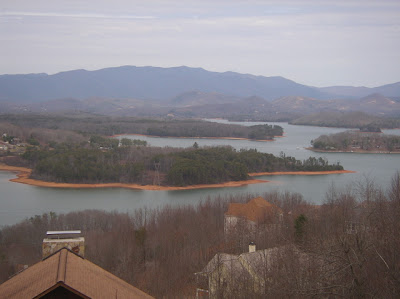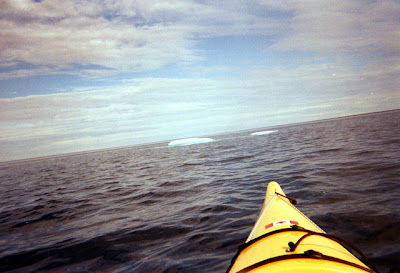
If you look out over a frozen lake, with its covering of ice and wind-blown snow, sooner or later you're going to wonder how things are fairing in the water down below. Are the plants dead from lack of sunlight? Are the fish still swimming around? Where does their oxygen come from now the surface is closed? There are lots of similar questions one can wonder about.
Let's look at the question of oxygen. Generally speaking, with open water, there is a balance maintained between the atmospheric oxygen - which we breathe - and the dissolved oxygen in the surface water - which aquatic plants and fish utilize. The wind plays a role in helping to stir the surface waters up and to promote the maximum absorption of oxygen down into the depths, but during the warmth of summer something else begins to take effect.
Water is an odd-ball material, which is most dense at 4°C and less dense at the freezing point. Thus melting ice water in the spring slowly begins to descend into the depths as it warms up. Water above 4°C stays closer to the surface. However there comes a point when virtually all the water in the lake is at or near 4°C. If there is some wind at this point - and there usually is - then wind driven mixing of the lake's water will occur. Around here we say, "The lake turned over." You might say the lake "breathed" because during this period the water in the deeper parts of the lake gets a fresh breath of oxygen as it can finally freely mix with the surface water.
As the summer progresses, this changes as the lighter, warmer surface water in the lake rises to the top and continues to 'breathe'. However, this warm water no longer mixes with the deeper water. It is too light to make it down very far. Instead, a definite layer of warm water starts to 'float' on the denser 4°C at the bottom effectively cutting it off from the air above. This 'barrier', called a
thermocline is usually about 10 meters down, but varies from lake to lake in temperate regions. As kids, we used to hold our breath, swim down, dip into this cold bottom layer, and find it shockingly cold compared to the upper layer we usually swam in. The dividing line is remarkably distinct, only a few centimeters from one to the other.
In the fall, the surface temperature of the water slowly lowers back down to the 4°C point, the layering effect disappears and once again the lake's water can freely circulate. When the winds blow the surface water, instead of reaching the shore line and recirculating back just above the thermocline, the water can now descend right to the bottom of the lake where it mixes and oxygenates the lake from top to bottom. The lake takes its second breath of the year in the fall.
It is this second breath that keeps everything happy during the winter when the ice stops the interchange of gases from air to water. Normally there is an amply supply of dissolved oxygen to allow life to continue during the winter. At times, however, there are sinister things at work under the ice which 'rob' the water of its oxygen. This is caused by organic run-off or pollution entering the lake during the summer and fall, followed by the decomposition of these organic materials during the winter. Decomposing organisms require oxygen and will use up the available supply killing fish and other dependent organisms. It is called 'winter-kill'. It's not a common occurrence thankfully, but one more reason to maintain healthy, clean waterways when you're paddling.














































